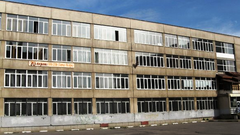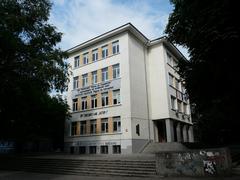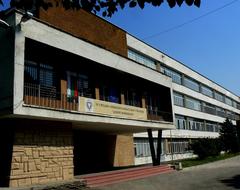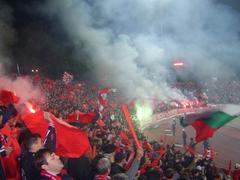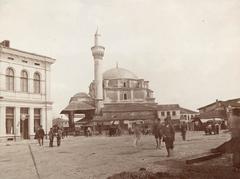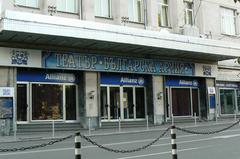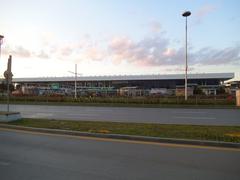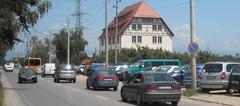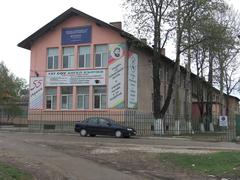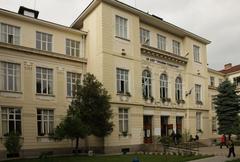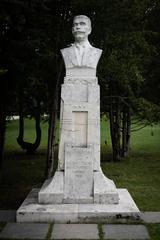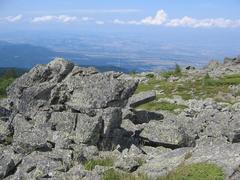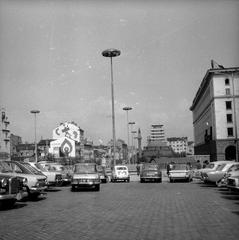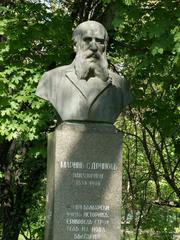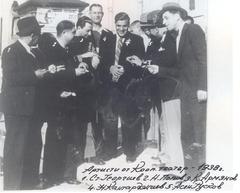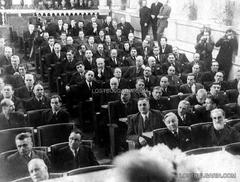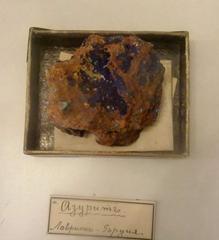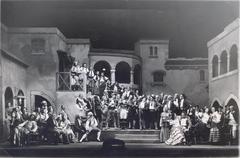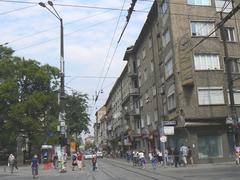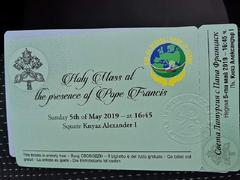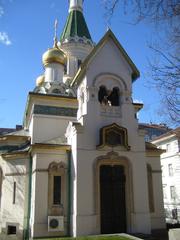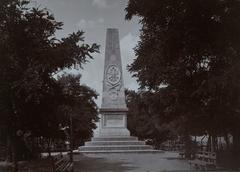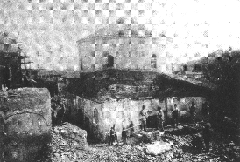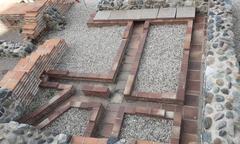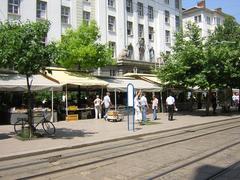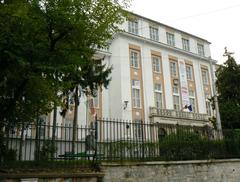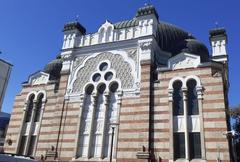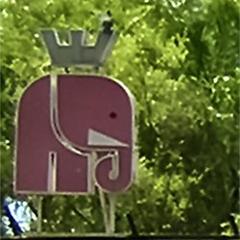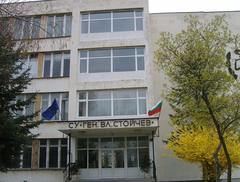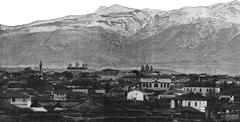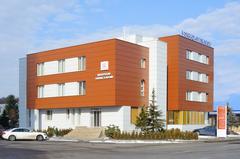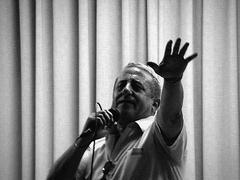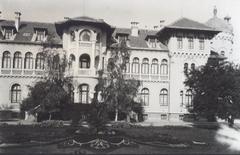Comprehensive Guide to Visiting Sofia, Stolichna Municipality, Bulgaria
Date: 13/08/2024
Captivating Introduction
Welcome to Sofia, where every corner tells a story, and every street whispers history. Imagine walking through a city that has seen the rise and fall of empires, from ancient Thracian tribes to Roman emperors, and from Ottoman sultans to Soviet leaders. Sofia is not just a city; it’s a living museum where the past and present dance together in a vibrant tapestry of culture, history, and modernity. As you stroll through its streets, you’ll encounter grand cathedrals, ancient ruins, and bustling markets that offer a sensory feast for the curious traveler.
Sofia’s origins date back to the 8th century BCE when the Thracian tribe known as the Serdi first settled here. By 29 BCE, it had become a Roman stronghold known as Serdica, earning praise from Emperor Constantine I the Great, who declared, “Serdica is my Rome” (Britannica). The city has survived the plundering of Attila the Hun, toggled between Byzantine and Bulgarian rule, and flourished under Ottoman control before emerging as the capital of a liberated Bulgaria in 1879 (Britannica).
From the majestic Alexander Nevsky Cathedral, which can accommodate up to 10,000 people, to the ancient Boyana Church with its pre-Renaissance frescoes, Sofia is a treasure trove of architectural marvels (The Crazy Tourist). Nestled near Vitosha Mountain, the city also offers natural attractions perfect for hiking and skiing (Nomadic Matt). Whether you’re a history buff, a nature lover, or a foodie, Sofia promises an unforgettable journey through time and culture.
Table of Contents
- Historical Overview of Sofia, Stolichna Municipality, Bulgaria
- Discover Sofia, Stolichna Municipality, Bulgaria: A Journey Through Time
- Visitor Tips for Sofia, Stolichna Municipality, Bulgaria
Historical Overview of Sofia, Stolichna Municipality, Bulgaria
Ancient Beginnings
Sofia’s roots trace back to the 8th century BCE when the Thracian tribe known as the Serdi (Sardi) first settled here. Fast forward to 29 BCE, and Sofia, then called Serdica (Greek: Sardica), fell under Roman rule. Emperor Trajan (98–117 CE) saw the city flourish, but it was Emperor Constantine I the Great who famously declared, “Serdica is my Rome.” In 342 or 343 CE, Serdica hosted the Council of Sardica, an important congregation of Christian bishops (Britannica).
Byzantine and Medieval Periods
After the Western Roman Empire’s decline, Serdica became part of the Byzantine Empire. It faced a rough patch when Attila the Hun plundered it between 441–447 CE, but bounced back under Byzantine Emperor Justinian in the 6th century. This period saw the restoration of the Church of St. Sofia, a structure that would later lend its name to the city (Britannica).
In 809 CE, Bulgarian khan Krum seized the city, renaming it Sredets (Greek: Triaditsa). The city toggled between Bulgarian and Byzantine rule until the Second Bulgarian Empire was established in 1185 (Britannica).
Ottoman Rule
Sofia fell to the Ottoman Turks in 1382, becoming the residence of the Ottoman governor of Rumelia. The city adopted a distinctive Oriental appearance during this period and stayed under Ottoman control until liberated by Russian troops on January 4, 1878. Shortly thereafter, on April 3, 1879, Sofia was crowned the capital of the newly liberated Bulgarian state (Britannica).
Modern Era
Post-World War II, Sofia underwent significant industrialization. Think engineering, metallurgy, food processing, and textiles! Printing, rubber, footwear, furniture, woodworking, and chemical industries also thrived. Surrounding the city is an agricultural zone bursting with fruit, vegetables, and dairy farms, all connected by a network of roads (Britannica).
Educational and Cultural Institutions
Sofia boasts the Bulgarian Academy of Sciences, the Academy of Agricultural Sciences, and the University of Sofia, established in 1888. The Cyril and Methodius National Library, the Ivan Vazov National Theatre and Opera House, an astronomical observatory, and several museums are also here. Historical monuments like the restored St. George, Boyana, and St. Sofia churches, alongside two mosques (one housing a fine archaeological collection), add to the city’s allure. The St. Alexander Nevsky Cathedral, built to honor the Russian liberators of 1878, is another must-see landmark (Britannica).
Architectural and Historical Sites
Sofia’s architectural landscape is a mosaic of its rich history. The St. Alexander Nevsky Cathedral, one of the world’s largest Eastern Orthodox cathedrals, can accommodate up to 10,000 people! Its golden domes and intricate frescoes are a sight to behold (The Crazy Tourist).
Don’t miss the Church of St. George, a Roman rotunda from the 4th century, with medieval frescoes rediscovered in the 1990s (The Crazy Tourist).
And then there’s the Boyana Church, a UNESCO World Heritage site famed for medieval frescoes depicting some 240 historical and biblical figures—painted in a style that predates the Renaissance by 200 years! (The Crazy Tourist).
Natural Attractions
Sofia isn’t just about history—it’s a nature lover’s paradise too. The city is nestled near Vitosha Mountain, a hotspot for hiking and skiing. Cherni Vrah (Black Peak), the mountain’s highest point at 2,290 meters, offers stunning views of the city and beyond. Established in 1934, Vitosha Nature Park is one of the oldest nature parks in the Balkans, perfect for outdoor adventures (Nomadic Matt).
Transportation and Accessibility
As Bulgaria’s main transport hub, Sofia is well-connected by air, rail, and road. Local transportation includes tramways, trolleybuses, and buses, with cable lifts providing access to the Vitosha Mountains (Britannica).
Discover Sofia, Stolichna Municipality, Bulgaria: A Journey Through Time
Alexander Nevsky Cathedral
Meet the grand dame of Sofia, Alexander Nevsky Cathedral! This iconic landmark, built to honor the 200,000 Russian soldiers who perished in the Russo-Turkish War of 1877-1878, is a stunning display of Neo-Byzantine architecture. Picture its main dome soaring to 45 meters and the bell tower reaching 50.52 meters. Covering an area of 3,170 square meters, this cathedral can host up to 10,000 people, making it one of the largest Eastern Orthodox cathedrals in the world. Imagine the soft echo of footsteps on marble floors, the faint scent of incense in the air, and the glow of candlelight casting flickering shadows on ancient icons. As you step inside, let the atmosphere envelop you in a meditative silence (Wonders of Bulgaria).
St. Sofia Church (Sveta Sofia)
Just a stone’s throw from the cathedral lies the ancient St. Sofia Church, dating back to the 4th century AD. This red-brick basilica has silently witnessed Sofia’s Roman, Byzantine, and medieval eras. Its simplicity and elegance evoke a timeless tranquility, making it a favorite spot for summer weddings. Imagine the soft echo of wedding bells as you explore this historical gem. Picture the warm sunlight streaming through the high windows, illuminating the ancient, red-brick walls, and feel the cool, smooth texture of the stone beneath your fingers (Wonders of Bulgaria).
St. George Rotunda Church
Step into the past at the Rotunda of St. George, an architectural marvel from the early 4th century AD. Considered Sofia’s oldest building, its cylindrical-domed structure stands proudly amidst the remnants of the ancient Serdika fortress. Located in the courtyard of the Government Office, this church has worn many hats over the centuries, from a Roman bath to an Ottoman mosque. Imagine the history etched into every brick and stone, the cool, dim interior that offers a respite from the bustling city outside, and the faint, musty scent of centuries-old walls (Wonders of Bulgaria).
Boyana Church
On the outskirts of Sofia in the village of Boyana, the Boyana Church awaits your visit. This UNESCO World Heritage site is famous for its 13th-century frescoes, considered precursors to the Renaissance. These vivid depictions of medieval Bulgarian art and culture offer a colorful window into the past. Imagine the vibrant colors of the frescoes, almost alive with the stories they tell, the quiet whispers of history as you walk through the small, dimly lit rooms, and the sense of awe as you stand before these masterpieces (BNR).
Largo of Serdika
Venture to the Largo of Serdika, where you can explore the remains of ancient Serdika, Sofia’s predecessor. This archaeological site near the Serdika metro station includes both above-ground and underground sections, giving a unique glimpse into the city’s Roman past. The Largo, also known as the heart of ancient Serdika, invites you to walk in the footsteps of Roman citizens. Imagine hearing the distant clatter of Roman chariots, the feel of ancient cobblestones beneath your feet, and the sight of ancient columns standing tall against the modern skyline. Take on the challenge of finding a specific detail in the frescoes of Boyana Church or identifying architectural features in the St. George Rotunda Church (Wonders of Bulgaria).
Local Lingo Lessons
To make your journey even more immersive, here are some key Bulgarian phrases that might come in handy:
- Zdravei (Здравей) - Hello
- Blagodarya (Благодаря) - Thank you
- Kak si? (Как си?) - How are you?
- Molya (Моля) - Please
Practice these phrases with locals, and you might just make some new friends along the way!
Engaging Stories
Did you know that the Alexander Nevsky Cathedral was once the scene of a daring escape during World War II? Or that the St. George Rotunda Church is said to be built on the site of an ancient pagan temple? These stories and more await you as you explore Sofia’s rich history.
FAQ Section
Q: What is the best time to visit Sofia? A: The best time to visit Sofia is during the spring (April to June) and autumn (September to October) when the weather is mild and the city is less crowded.
Q: Are there any local dining tips? A: Don’t miss trying traditional Bulgarian dishes like banitsa (a pastry filled with cheese) and shopska salad (a fresh salad with tomatoes, cucumbers, onions, peppers, and feta cheese).
Q: What should I know about cultural etiquette in Sofia? A: It’s polite to greet people with a handshake and maintain eye contact. Also, removing your shoes when entering someone’s home is a common practice.
Visitor Tips for Sofia, Stolichna Municipality, Bulgaria
Accommodation Options
City Center (Centrum)
Stay in the heart of the action! Centrum, with landmarks like Alexander Nevsky Cathedral and Vitosha Boulevard, is perfect for first-timers. Imagine waking up to the chimes of the cathedral and stepping out to lively streets filled with cafes and shops (Destination Abroad).
Vitosha Boulevard
Shop till you drop on Vitosha Boulevard! With its bustling energy, this main street is ideal for those who love to be in the thick of things. By day, explore boutiques and by night, experience Sofia’s modern nightlife (Destination Abroad).
Lozenets
Seeking tranquility? Head to Lozenets. This upscale residential area offers a leafy escape with parks and local dining spots. It’s your peaceful retreat just a hop away from the city center (Destination Abroad).
Doctor’s Garden (Doktorska Gradina)
For a serene stay, Doctor’s Garden is the spot. Close to embassies and cultural institutions, it’s perfect for those who appreciate quiet streets and beautiful parks (Destination Abroad).
Getting Around Sofia
Public Transportation
Sofia’s public transport system is a traveler’s dream. With buses, trams, and a subway that connects the city center to the airport, it’s both affordable and efficient. Tickets are just 1.60 BGN, making it easy to explore every corner of the city (Nomadic Matt).
Taxis
Need a ride? Taxis are plentiful and cheap, but stick to reputable companies or apps to avoid overcharging. Always check the meter or agree on a fare before hopping in (Nomadic Matt).
Car Rentals
If you like the freedom to roam, rent a car. Services like Discover Cars offer great deals, but be prepared for traffic and parking challenges (Nomadic Matt).
Staying Safe
General Safety
Sofia is very safe, but like any city, keep an eye on your belongings to avoid petty crimes. Violent crime is rare, so relax and enjoy your visit (Nomadic Matt).
Solo Female Travelers
Ladies, feel secure exploring Sofia solo. Just follow standard precautions like not leaving drinks unattended and sticking to well-lit areas at night. Enjoy the vibrant nightlife with friends or in busy spots (Nomadic Matt).
When to Visit
Summer (June-August)
Love the sun? Visit in summer when temperatures soar to 29-32°C. Enjoy parks and outdoor activities, but be prepared for crowds (Nomadic Matt).
Spring (March-May) and Fall (September-October)
For milder weather and fewer tourists, spring and fall are perfect. With temperatures ranging from 5-21°C, it’s a great time for sightseeing and hiking. Don’t miss the autumn foliage! (Nomadic Matt)
Winter (December-February)
Winter is chilly with temps around -5°C, but if you’re a fan of winter sports, the snowy mountains are calling. Otherwise, it’s best to skip winter for a visit (Nomadic Matt).
Dive into Sofia’s Culture
Language
Bulgarian is the official language. While many locals speak English, knowing a few Bulgarian phrases can go a long way. Try saying “Zdravey” (Hello) or “Blagodarya” (Thank you) (Go World Travel).
Local Customs
A unique quirk here: nodding means “no” and shaking your head means “yes.” Keep this in mind to avoid confusion! (Go World Travel)
Taste the Flavors of Sofia
Traditional Bulgarian Dishes
Don’t leave without trying banitsa, shopska salad, and kavarma. These dishes offer a delicious taste of Bulgarian tradition (Destination Abroad).
Modern Dining
For a contemporary twist, Sofia’s fusion restaurants blend traditional ingredients with modern techniques. A culinary adventure awaits (Destination Abroad).
Must-See Attractions
Alexander Nevsky Cathedral
A symbol of Sofia, this cathedral is a marvel of Eastern Orthodox architecture. Its grandeur and history are not to be missed (Destination Abroad).
National Archaeological Museum
Step back in time with artifacts from Thracian, Roman, and Byzantine periods. This museum is a treasure trove of history (Destination Abroad).
Vitosha Boulevard
Experience the bustling vibe of Sofia’s main shopping street. Perfect for shopping, dining, and soaking up the city’s energy (Destination Abroad).
Borisova Gradina Park
For a peaceful escape, Borisova Gradina Park offers lush greenery and tranquility. Ideal for a stroll or a picnic (Destination Abroad).
Explore Beyond Sofia
Plovdiv
Take a day trip to Plovdiv, one of Europe’s oldest cities. Discover its Roman Theater, Ethnographic Museum, and charming old town. Book ahead as tours fill up fast (Destination Abroad).
Lovech and Krushunski Waterfalls
Explore the natural beauty and historic sites of Lovech and the stunning Krushunski Waterfalls. A refreshing escape from city life (Destination Abroad).
Ready to Explore Sofia?
Download Audiala, your ultimate tour guide companion. With expertly crafted audio guides, discover Sofia’s hidden gems and rich stories. Make your trip unforgettable with Audiala’s insider tips and local insights. Download now and unlock the secrets of Sofia!
Call to Action
Sofia is a city that defies easy categorization. It’s a place where ancient ruins coexist with modern skyscrapers, where every street corner has a story to tell, and where the past and present blend seamlessly. From the awe-inspiring Alexander Nevsky Cathedral to the serene Borisova Gradina Park, Sofia offers a diverse array of experiences that cater to every type of traveler.
Whether you’re exploring the rich history of the Boyana Church or hiking up Vitosha Mountain for a panoramic view of the city, Sofia captivates with its unique blend of cultural and natural attractions. The city’s vibrant atmosphere, combined with its historical depth, makes it a must-visit destination for anyone looking to experience a blend of the old and new.
To make the most of your visit, download the Audiala app. With its expertly crafted audio guides and insider tips, Audiala turns your exploration of Sofia into an immersive experience. From hidden gems to well-known landmarks, Audiala ensures you won’t miss a thing. So pack your bags, put on your walking shoes, and get ready to uncover the secrets of Sofia with Audiala as your trusty guide.
References
- Britannica, n.d., ‘Sofia’, source
- The Crazy Tourist, n.d., ‘15 Best Things to Do in Sofia (Bulgaria)’, source
- Nomadic Matt, n.d., ‘Sofia Travel Guide’, source
- Wonders of Bulgaria, n.d., ‘Things to Do in Sofia’, source
- BNR, n.d., ‘Sofia: An Ancient City with a Place in Sofia’s Cultural History’, source
- Destination Abroad, n.d., ‘Is Sofia Worth Visiting?’, source
- Go World Travel, n.d., ‘Culture in Sofia, Bulgaria’, source




